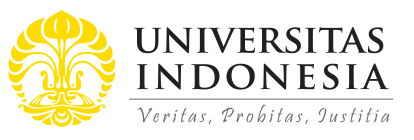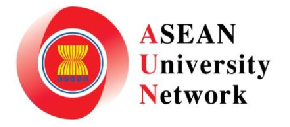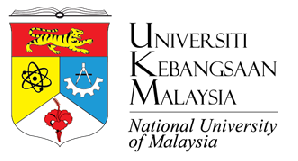
Abstract
Globalization has a profound impact on the higher education institutions to build graduates capable to work and compete in the fourth industrial revolution. The Association of Southeast Asian Nations (ASEAN) region is no exception to this movement. The students graduated from overseas gain a global exposure through intercultural competencies in the diverse and multicultural environment. However, the ratio of the immobile students is very high who are in need to be skilled with global competencies such as intercultural communication, knowledge, and awareness about diverse cultures, and understanding of international and global challenges. Internationalization at home is considering an apt solution for such challenges but, unfortunately, neglected by higher education institutions (HEIs) administration and policymakers in ASEAN due to the incomprehension regarding potential benefits linked with this change. The aim of this proposed project is to identify and operationalize the solutions for the deficiency of global and international competencies among the immobile students in ASEAN countries. Through involving professionals from diverse culture and backgrounds, and by conducting information sharing activities on internationalization at home (IaH) i.e. workshops, symposiums, and training, it is expected that this project will bring a societal change through signifying the need of internationalization at home. The findings of the project would be highly significant for HEIs administration, education ministries, and corporate professionals to achieve the workforce demands such as global graduates capable to move efficiently in the rapidly changing global markets.
References
Ackers, L. (2008). Internationalisation, mobility and metrics: A new form of indirect discrimination? Minerva, 46, 411–435.
Beelen, J., & Jones, E. (2015). Redefining internationalization at home. In the European Higher Education Area (pp. 59-72). Springer, Cham.
Bentao, Y. (2011). Internationalization at home: the path to internationalization in Chinese research universities. Chinese Education & Society, 44(5), 84-96.
Bhandari, R., & Lefébure, A. (Eds.). (2015). Asia: The Next Higher Education Superpower? New York: Institute of International Education.
Brandenburg, U., & De Wit, H. (2015). The end of internationalization. International higher education, (62).
Carter, D. F. (2006). Key issues in the persistence of underrepresented minority students. New directions for institutional research, 2006(130), 33-46.
Deardorff, D. K. (2011). Assessing intercultural competence. New directions for institutional research, 2011(149), 65-79.
Dessoff, A. (2006). Who's not going abroad? International Educator, 15(2), 20.
Hong, K. S., & Songan, P. (2011). ICT in the changing landscape of higher education in Southeast Asia. Australasian Journal of Educational Technology, 27(8).
Horn, A. S., Hendel, D. D., & Fry, G. W. (2012). The empirical basis for adopting a civic rationale for internationalization. Higher Education, 64(2), 161-175.
Jon, J. E. (2013). Realizing internationalization at home in Korean higher education: Promoting domestic students’ interaction with international students and intercultural competence. Journal of Studies in International Education, 17(4), 455-470.
Leask, B. (2009). Using formal and informal curricula to improve interactions between home and international students. Journal of studies in international education, 13(2), 205-221.
McBurnie, G., & Ziguras, C. (2001). The regulation of transnational higher education in Southeast Asia: Case studies of Hong Kong, Malaysia and Australia. Higher Education, 42(1), 85-105.
Mestenhauser, J. A. (2011). Reflections on the past, present, and future of internationalizing higher education: Discovering opportunities to meet the challenges. Global Programs and Strategy Alliance at the University of Minnesota.
Nguyen, A. (2009). The role of regional organizations in East Asian regional cooperation and integration in the field of higher education. Available at: http://www.waseda-giari.jp/sysimg/imgs/20090410_arir_report.pdf. Accessed 12 Mar 2012.
Paige, R. M. (2004). Instrumentation in intercultural training. Handbook of intercultural training, 3, 85-128.
Poyrazli, S., & Grahame, K. M. (2007). Barriers to adjustment: Needs of international students within a semi-urban campus community. Journal of instructional Psychology, 34(1), 28.
Rumbley, L. E., Altbach, P. G., & Reisberg, L. (2012). Internationalization within the higher education context. The SAGE handbook of international higher education, 3-27.
Salisbury, M. H., Paulsen, M. B., & Pascarella, E. T. (2011). Why do all the study abroad students look alike? Applying an integrated student choice model to explore differences in the factors that influence white and minority students’ intent to study abroad. Research in Higher Education, 52(2), 123-150.
Smith, R. A., & Khawaja, N. G. (2011). A review of the acculturation experiences of international students. International Journal of Intercultural Relations, 35(6), 699-713.
Teekens, H. (2007). Internationalisation at home: An introduction. In H. Teekens (Ed.), Internationalisation at home: Ideas and ideals (Vol. 20, pp. 3-11). Amsterdam: EAIE.
Yang, R. (2012). Internationalization, regionalization, and soft power: China’s relations with ASEAN member countries in higher education. Frontiers of Education in China, 7(4), 486-507.
Yeh, C. J., & Inose, M. (2003). International students reported English fluency, social support satisfaction, and social connectedness as predictors of acculturative stress. Counselling Psychology Quarterly, 16(1), 15-28.
Recommended Citation
Khalid, Jamshed and Ali, Anees Janee
(2018).
Promoting Internationalization at home in ASEAN Higher Education Institutions: A proposed project.
ASEAN Journal of Community Engagement, 2(1).
Available at: https://doi.org/10.7454/ajce.v2i1.106







